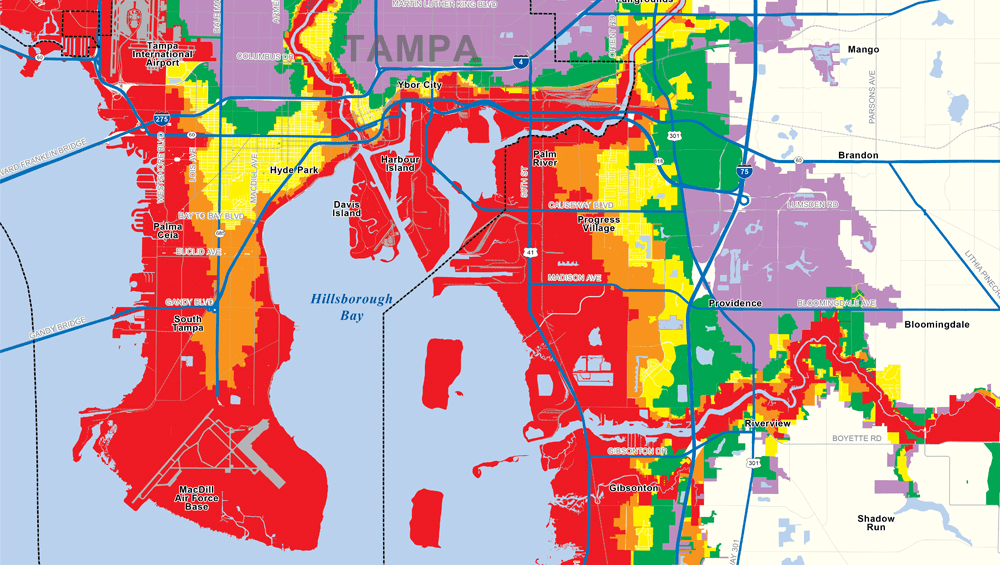Hillsborough County, located in the state of Florida, United States, is home to over 1.5 million people and a popular tourist destination. Due to its coastal location, the county is susceptible to hurricanes and tropical storms.
Understanding Evacuation Zones
Hillsborough County is divided into several evacuation zones, each with specific evacuation routes and shelter locations. These zones are color-coded to help residents quickly identify their evacuation status.
- Zone A: This zone is typically the first to be evacuated during severe weather events. Residents in this zone should be prepared to evacuate immediately when ordered to do so. This zone often includes low-lying areas, coastal regions, and flood-prone areas.
- Zone B: Residents in this zone may be required to evacuate depending on the severity of the storm. This zone may include areas that are at a higher elevation but could still be affected by flooding or storm surge.
- Zone C: This zone is generally less likely to be evacuated, but residents should still be prepared to evacuate if necessary. This zone may include inland areas that are less vulnerable to coastal hazards.
Preparing for Evacuation
It's crucial to have an evacuation plan in place well before a storm approaches. Here are some essential steps to take:
- Identify Your Evacuation Zone: Determine which evacuation zone you live in and familiarize yourself with the designated evacuation routes. You can find this information on the Hillsborough County Emergency Management website or by contacting your local emergency management officials.
- Gather Essential Supplies: Prepare a disaster supply kit with essential items such as food, water, first aid supplies, a flashlight, a battery-powered radio, and a change of clothes. You should also have a plan for your pets, as many shelters do not accommodate animals.
- Determine a Safe Location: Decide where you will go if you are forced to evacuate. This could be a friend's or family member's home, a hotel, or a designated shelter. Make arrangements in advance to ensure you have a place to stay.
- Practice Your Evacuation Plan: Conduct a family evacuation drill to familiarize yourself with your plan and identify any potential issues.
Staying Informed
During severe weather events, it's essential to stay informed about the latest updates. Monitor local news channels, weather alerts, and the Hillsborough County Emergency Management website for information on evacuation orders, shelter locations, and other important updates. You can also sign up for emergency alerts through the county's alert system.
Additional Resources
- Hillsborough County Emergency Management:
- https://hcfl.gov/residents/public-safety/emergency-management
- National Weather Service: https://www.weather.gov/
- Florida Division of Emergency Management: https://www.floridadisaster.org/
By being prepared and informed, you can help ensure your safety and the safety of your family during emergencies.
Keywords: Hillsborough County, evacuation zones, Florida, hurricanes, tropical storms, emergency preparedness, disaster relief, safety, survival, natural disasters, weather alerts, emergency management.
